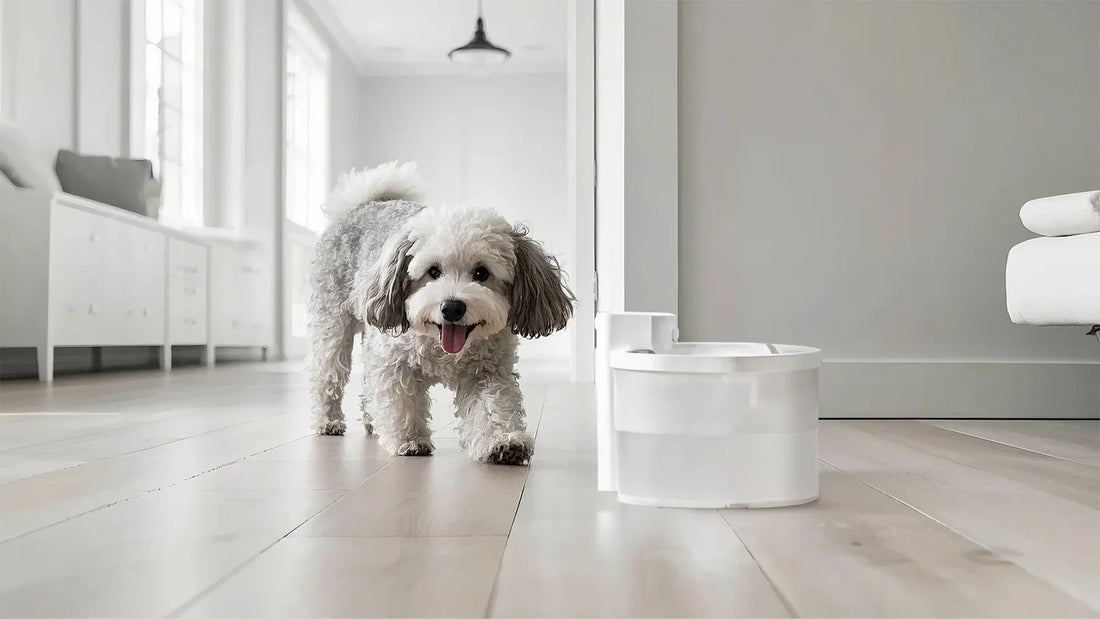For many pet owners, the joy of having a furry companion is sometimes overshadowed by the discomfort of allergies. Sneezing, itchy eyes, and congestion can make life with a dog challenging. One common question that arises is: does giving a dog a bath help with allergies? The answer is more nuanced than a simple yes or no. This article delves into the science behind pet allergies, the role of bathing, and practical strategies to manage symptoms effectively.
Understanding Pet Allergies
Pet allergies are primarily triggered by proteins found in a dog's dander (dead skin cells), saliva, and urine. These proteins can become airborne and settle on surfaces, making them difficult to avoid. When inhaled or touched, they can cause an immune system reaction in sensitive individuals, leading to allergy symptoms.
Contrary to popular belief, it's not the dog's fur itself that causes allergies but the allergens that cling to it. This is why even hypoallergenic breeds, which shed less fur, can still trigger allergies in some people.
The Role of Bathing in Reducing Allergens
Bathing your dog can play a significant role in reducing the amount of allergens they carry. Here's how:
- Removes Dander: Regular baths help wash away dead skin cells, reducing the amount of dander in your home.
- Washes Away Saliva: Dogs often lick their fur, leaving behind saliva that contains allergens. Bathing helps remove this residue.
- Reduces Pollen and Dust: Dogs can pick up pollen, dust, and other outdoor allergens on their fur. A bath helps eliminate these irritants.
However, it's important to note that bathing alone may not completely eliminate allergy symptoms. Allergens can still be present in the environment, and some dogs may produce more allergens than others.
How Often Should You Bathe Your Dog?
The frequency of bathing depends on your dog's breed, skin type, and lifestyle. Over-bathing can strip your dog's skin of natural oils, leading to dryness and irritation. Here are some general guidelines:
- Short-Haired Breeds: Bathing once a month is usually sufficient.
- Long-Haired Breeds: These dogs may require more frequent baths, especially if they spend time outdoors.
- Dogs with Skin Conditions: Consult your veterinarian for a tailored bathing schedule.
Using a gentle, hypoallergenic shampoo can help maintain your dog's skin health while reducing allergens.
Additional Strategies to Manage Pet Allergies
While bathing your dog can help, it's just one piece of the puzzle. Here are other strategies to consider:
1. Keep Your Home Clean
Regular cleaning can significantly reduce allergen levels. Vacuum carpets, rugs, and upholstery frequently using a vacuum with a HEPA filter. Wash your dog's bedding and toys regularly.
2. Create Allergy-Free Zones
Designate certain areas of your home, such as bedrooms, as off-limits to your dog. This can provide a safe space for allergy sufferers to retreat to.
3. Use Air Purifiers
Air purifiers with HEPA filters can help remove airborne allergens, improving indoor air quality.
4. Groom Your Dog Regularly
Brushing your dog daily can help remove loose fur and dander before it spreads around your home. Do this outdoors if possible to minimize indoor allergen exposure.
5. Consult a Healthcare Professional
If your allergy symptoms persist, consult an allergist. They can recommend treatments such as antihistamines, nasal sprays, or immunotherapy.
The Science Behind Bathing and Allergies
Research has shown that bathing can reduce the amount of allergens on a dog's fur. A study published in the Journal of Allergy and Clinical Immunology found that washing a dog with water alone reduced allergen levels by 84%. Using shampoo increased this reduction to 98%.
However, the study also noted that allergen levels returned to baseline within 24 hours, highlighting the importance of regular bathing and other allergen-reduction strategies.
Potential Challenges of Bathing Your Dog
While bathing can be beneficial, it's not without its challenges. Some dogs may dislike water or become anxious during baths. Additionally, over-bathing can lead to skin issues. Here are some tips to make bath time easier:
- Introduce Bathing Gradually: Start with short, positive experiences to help your dog acclimate.
- Use Treats and Praise: Reward your dog for calm behavior during baths.
- Choose the Right Products: Use shampoos and conditioners formulated for dogs to avoid skin irritation.
When Bathing Isn't Enough
For some individuals, bathing their dog may not provide sufficient relief from allergy symptoms. In such cases, it's important to explore other options, such as:
- Allergy Testing: Identifying specific allergens can help tailor your management plan.
- Medications: Over-the-counter or prescription medications can help control symptoms.
- Lifestyle Changes: Reducing exposure to other allergens, such as pollen or dust mites, can also help.
Ultimately, managing pet allergies requires a multifaceted approach that combines bathing with other strategies.
Living with a dog and allergies doesn't have to be a constant struggle. By understanding the role of bathing and implementing additional allergen-reduction strategies, you can enjoy the companionship of your furry friend without compromising your health. Remember, every dog and allergy sufferer is unique, so it may take some trial and error to find the best approach for your situation. Start with regular baths, keep your home clean, and consult a professional if needed. With the right plan, you and your dog can thrive together.













